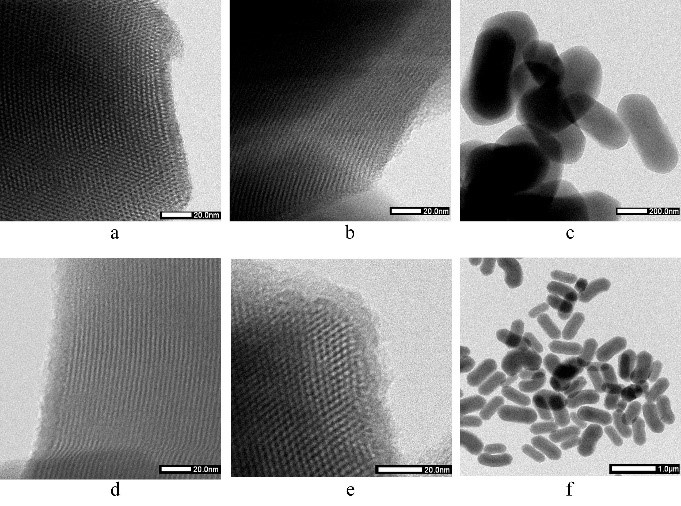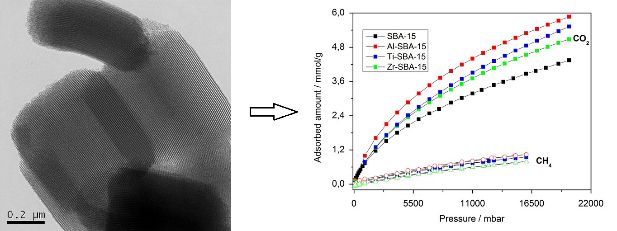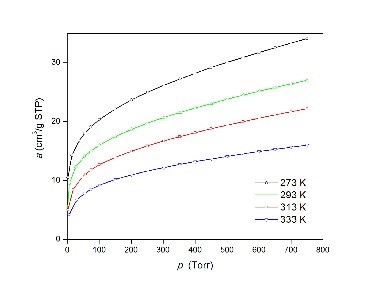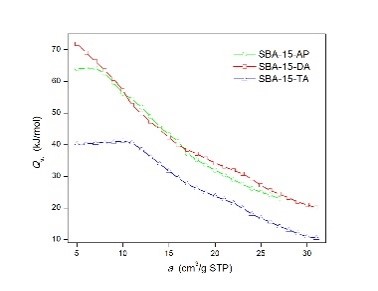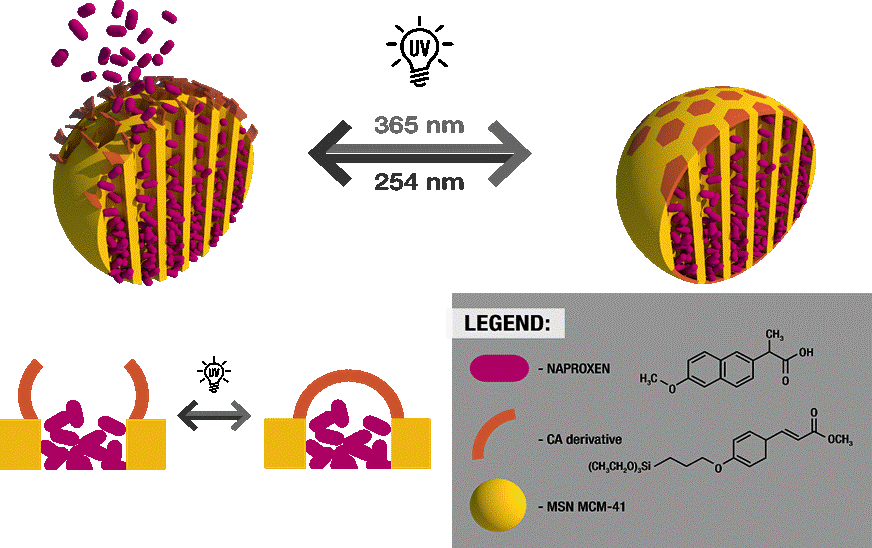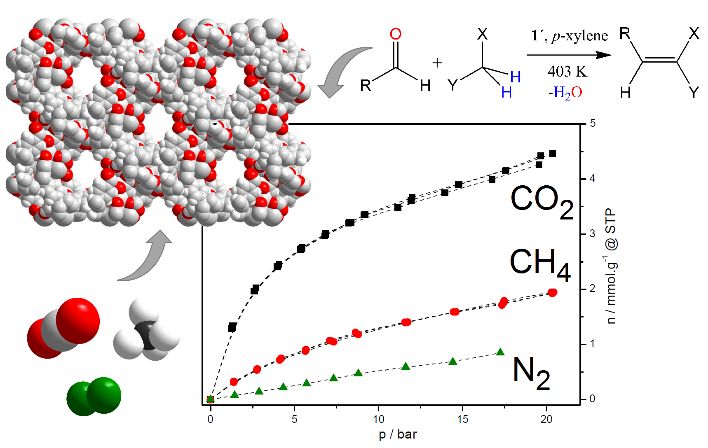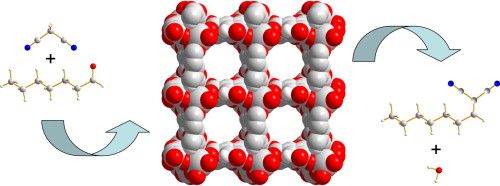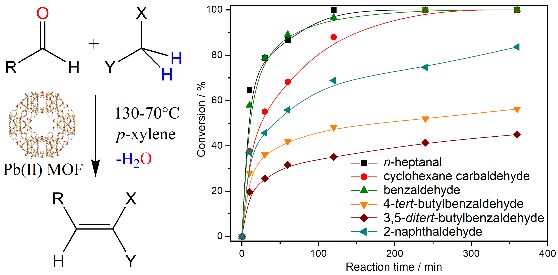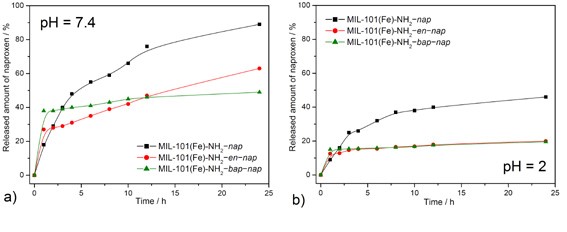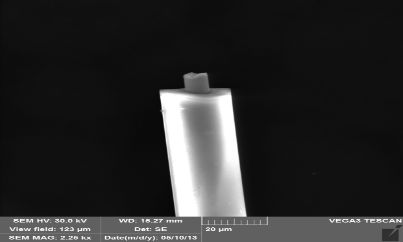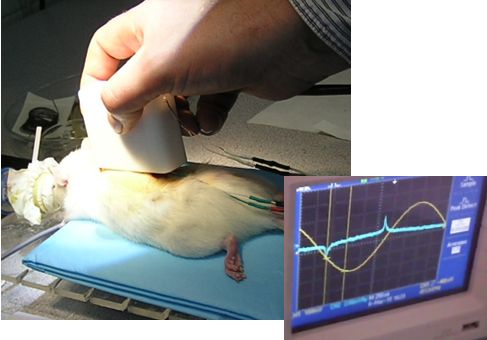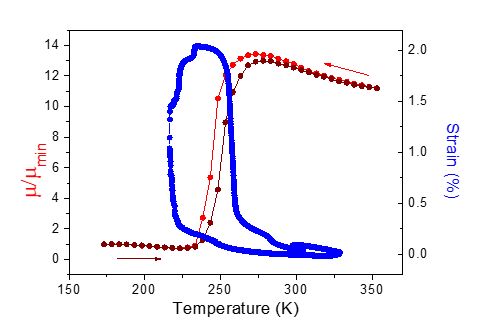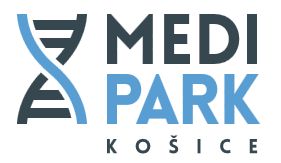- The area of arranged nanoporous materials is concentrated on the research of two types of substances: a) arranged nanoporous silica and b) metal-organic frameworks
a.) Arranged nanoporous silica – V. Zeleňák, D. Halamová, A. Zeleňáková, M. Almáši
The issue of organized nanoporous silica (PNS) emerged on the scene in the year 1992, and has since attracted great attention in global research. In Slovakia, it has been adapted and developed by the team members. As opposed to other forms of SiO2, the arranged nanoporous silica is characterized by evenly arranged, unimodal pores, the size of which can range from about 4 nm to 30 nm. This form of silica is prepared by a sol-gel method using self-arranging surfactants that form a structural motif in the synthesis. There exist different types of arranged nanoporous silica. The team members were involved in hexagonal symmetry silica (MCM-41, SBA-15) and cubic symmetry (SBA-12, SBA-16, MCM-48). The advantage of silica is that its surface can be chemically modified for different purposes. The team members have been involved in the designing silica- based syntheses of the arranged nanoporous materials, as well as in its use. The team members examined the use of PNS in the following areas:
Periodic Nanoporous Silica – V. Zeleňák, D. Halamová, A. Zeleňáková, M. Almási
- Sorption of carbon dioxide
- Development of new drug carriers with targeted delivery and release of drug through physical stimuli
- Preparation of composite magnetic nanomaterials (see area 3).
|
Silica and structure |
Silica and CO2 sorption |
Silica and drug delivery |
Representative publications on the PNS:
- E. Beňová, V. Zeleňák, D. Halamová, M. Almáši, V. Petruľová, M. Psotka, A. Zeleňáková, M. Bačkor, V. Hornebecq: A drug delivery system based on switchable photo-controlled p-coumaric acid derivatives anchored on mesoporous silica, Journal of Materials Chemistry B, 5 (2017) 817-825
- V. Zeleňák, D. Halamová, L. Gaberová, E. Bloch, P. Llewellyn, Amine-modified SBA-12 mesoporous silica for carbon dioxide capture: Effect of amine basicity on sorption properties, Microporous Mesoporous Materials, 116 (2008) 358-364
- V. Zeleňák, J. Magura, A. Zeleňáková, R. Smolkova: Carbon dioxide and methane adsorption over metal modified mesoporous SBA-15 silica, PURE AND APPLIED CHEMISTRY, 89 (2017) 493-500.
b.) Metal-organic frameworks – V. Zeleňák, M. Almáši
The issue of porous metal-organic networks (MOF) has been one of the fastest growing areas of chemistry over the past decade. In Slovakia, this issue has been introduced and developed by the members of the top team. Porous MOFs are highly crystalline, inorganic-organic compounds with a three-dimensional structure. They are formed by linkingof clusters of metals, referred to as secondary building units (SBUs), with multidentate organic ligands (e.g., carboxylates) through coordination bonds. Rapid development of this area of chemistry is the driving force behind the outstanding characteristics and properties of porous MOF, one gram of which can have a surface area of several thousand m2/g. MOFs have a wide potential use, e.g. in catalysis, magnetic applications, in the preparation of luminescent materials, but especially in the field of storage and separation of gases. Using the “Reticular Synthesis” concept, pore sizes in the MOFs can easily be changed from angströms to nanometres.
Team members explore the use of the MOFs in the following areas:
- Sorption of gases
- Catalysis
- Magnetic properties
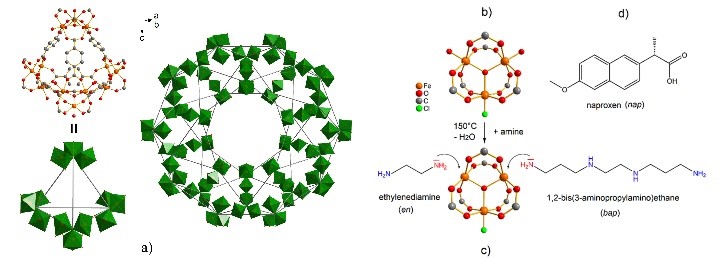
|
||
|
MOF and gas sorption |
MOF and catalysis |
MOF and drug delivery |
Representative publications on the MOFs:
- Miroslav Almáši, Vladimír Zeleňák, Arnošt Zukal, Juraj Kuchár, Jiři Čejka: A novel zinc(II) metal-organic framework with a diamond-like structure: Synthesis, study of thermal robustness and gas adsorption properties, DALTON TRANSACTIONS, 45 (2016) 1233-1242.
- Miroslav Almáši, Vladimír Zeleňák, Juraj Kuchár, Sandrine Bourrelly, Philip Llewellyn: New members of MOF-76 family containing Ho(III) and Tm(III) ions: Characterization, stability and gas adsorption properties, Colloids and Surfaces A: Physicochemical and Engineering Aspects, 496 (2016) 114-124.
- M. Almáši, V. Zeleňák, M. Opanasenko, I. Císařová, Ce(III) and Lu(III) metal-organic frameworks with Lewis acid metal sites: Preparation, sorption properties and catalytic activity in Knoevenagel condensation, CATALYSIS TODAY, 243 (2015) 184-194
- The field of magnetic micro wires – R. Varga, Z. Vargová
The field of magnetic wires focuses on the research into and development of modern multifunctional materials with outstanding features. Glass-coated magnetic micro wires are characterized by an extremely fast magnetizing process, which makes it easy to pick it up at great distances in a simple way and even without contact. The magnetizing process is, moreover, sensitive to magnetic field, temperature, mechanical stress, and so on. These properties enable subsequent application of glass-coated micro wires to the development of miniature multifunctional sensors and position actuators, temperature, and mechanical stresses.
|
SEM micrograph of class coated magnetic microwire |
Application of micro wires as sensors for measuring temperature in biomedicine |
Monocrystalline micro wires with a phenomenon of form memory are characterised by high elongation associated with a major permeability change |
Representative publications on the magnetic micro wires:
- R. Varga, P. Klein, R. Sabol et al. „Magnetically bistable microwires: Properties and applications for magnetic field, temperature, and stress sensing.“ (Book Chapter) Springer Series in Materials Science, 252 (2017), 169-212.
- R. Varga, T. Ryba, Z. Vargova, K. Saksl, V. Zhukova, A. Zhukov, „Magnetic and structural properties of Ni-Mn-Ga Heusler-type microwires“ Scripta Materialia 65 (2011), 703-706;
- R Varga, K.L. Garcia, M. Vazquez, P. Vojtanik, „Single-domain wall propagation and damping mechanism during magnetic switching of bistable amorphous microwires.“ PHYSICAL REVIEW LETTERS 94 (2005), 017201.
- The field of magnetic nanoparticles – A. Zeleňáková, V. Zeleňák, P. Hrubovčák
In the field of magnetic nanoparticle research, the team uses two approaches to prepare nanoparticles. The first approach is based on a microemulsion reversal micelle method by which core-shell magnetic nanoparticles are prepared (see figure below). The second approach is also called “nanocasting”, where the arranged nanoporous matrices are described in area No. 1, are used as forms in the preparation of nanoparticles (see figure below). Depending on the size of the porous matrix, it is possible to match the magnetic interactions between the particles. The prepared magnetic systems are investigated:
- in the field of fundamental magnetism
- in the field of magnetic targeting and imaging
 |
 |
| Nanocasting method | Core-shell Fe@Au nanoparticles prepared by the microemulsion method |
Representative publications on the magnetic nanoparticles:
- V. Zeleňák, A. Zeleňáková, J. Kováč, U. Vainio, N. Murafa, Influence of Surface Effects on Magnetic Behavior of Hematite Nanoparticles Embedded in Porous Silica Matrix, Journal of Physical CHemistry C, 113 (2009) 13045-13050
- A. Zeleňáková, V. Zeleňák, Š. Michalík, J. Kováč, M.W. Meisel, Structural and magnetic properties of CoO-Pt core-shell nanoparticles, PHYSICAL REVIEW B, 89 (2014) Article Number: 104417
- A. Zeleňáková, V. Zeleňák, I. Maťko, M. Strečková, P. Hrubovčák, J. Kováč: Superferromagnetism in chain-like Fe@SiO2 nanoparticle ensembles, JOURNAL OF APPLIED PHYSICS, 116 (2014) Article Number: 033907
- V. Zeleňák, D. Halamová, A. Zeleňáková, V. Girman: Periodic 3D nanoporous silica modified by amine or SPION nanoparticles as NSAID delivery system, JOURNAL OF POROUS MATERIALS, 23 (2016) 1633-1645

